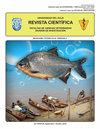Changes in hematological status depending on reproductive stage of ewes naturally infected with internal parasites in North–Eastern Algeria
IF 0.3
4区 农林科学
Q4 VETERINARY SCIENCES
Revista Cientifica-Facultad De Ciencias Veterinarias
Pub Date : 2023-09-29
DOI:10.52973/rcfcv-e33308
引用次数: 0
Abstract
In Algeria, sheep farming is still largely traditional, and ewes are subject to various pathologies, particularly parasitic diseases leading to reproductive failure and production losses. To assess the influence of internal parasites (helminths and protozoa) and their interaction with the different phases of reproduction and season on hematological parameters, fecal and blood samples (n = 89) were taken from ewes during the period from the end of gestation to 3 months after parturition, two weeks apart. Animals were reared under a traditional pasture–based farming system in a Region of Northeastern Algeria characterized by a Mediterranean climate. Parasitic coproscopy results showed the consistent presence of digestive strongyles, Strongyloides, Trichuris ovis, Moniezia spp., Fasciola hepatica, and Coccidia. Hematological parameters, mainly hematocrit (HCT), hemoglobin (HGB), and erythrocytes (RBC), showed lower levels in anemic ewes throughout the study period. These hematological effects became significantly prevalent in 91% of the animals (P<0.05) during the third month postpartum (p.p.). The use of a mixed–effects model confirmed the significant hematological effect (P<0.05) of internal parasitism, which was amplified significantly by its interaction with the reproduction stage for HCT and RBC (P<0.01). Monitoring of blood biological constants in ewes during the critical reproductive stages seems to provide valuable data to improve their welfare and resistance to potential internal parasites.阿尔及利亚东北部自然感染体内寄生虫的母羊的血液学状况随繁殖阶段的变化
在阿尔及利亚,养羊在很大程度上仍然是传统的,母羊容易患各种疾病,特别是寄生虫病,导致繁殖失败和生产损失。为了评估母羊体内寄生虫(蠕虫和原生动物)及其与不同繁殖阶段和季节的相互作用对血液学参数的影响,在母羊妊娠结束至产后3个月期间(间隔2周)采集了粪便和血液样本(n = 89)。在阿尔及利亚东北部一个地中海气候的地区,动物在传统的以牧场为基础的农业系统下饲养。寄生阴道镜检查结果显示,消化道圆形虫、类圆形虫、鹅毛线虫、莫尼兹虫、肝片吸虫和球虫一致存在。血液学参数,主要是血细胞比容(HCT)、血红蛋白(HGB)和红细胞(RBC),在整个研究期间显示贫血母羊的水平较低。产后第三个月,91%的动物出现了明显的血液学影响(p < 0.05)。混合效应模型的使用证实了内寄生对血液学的显著影响(P<0.05),并通过其与HCT和RBC的繁殖阶段的相互作用显著放大(P<0.01)。监测母羊在关键的繁殖阶段的血液生物学常数似乎提供了有价值的数据,以提高其福利和抵抗潜在的内部寄生虫。
本文章由计算机程序翻译,如有差异,请以英文原文为准。
求助全文
约1分钟内获得全文
求助全文
来源期刊
CiteScore
0.20
自引率
0.00%
发文量
66
审稿时长
18-36 weeks
期刊介绍:
Information not localized

 求助内容:
求助内容: 应助结果提醒方式:
应助结果提醒方式:


